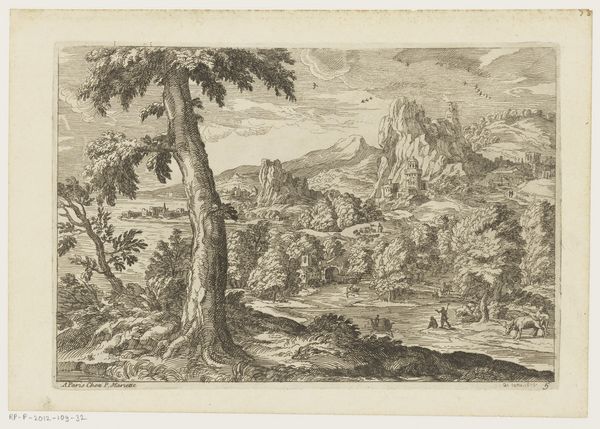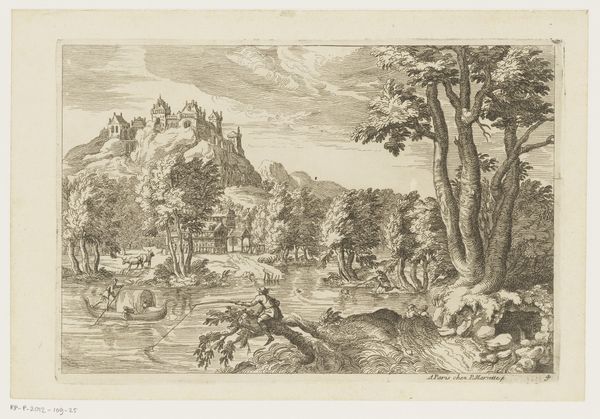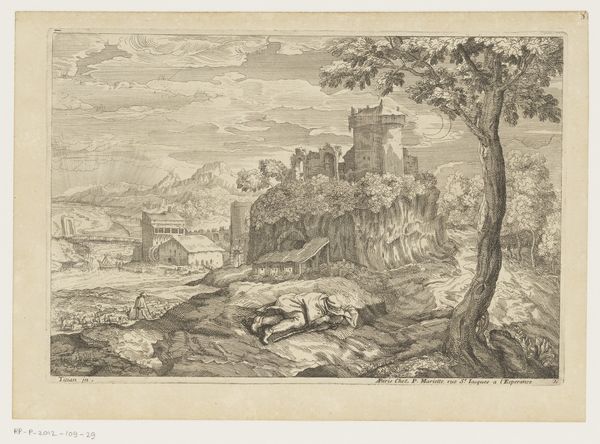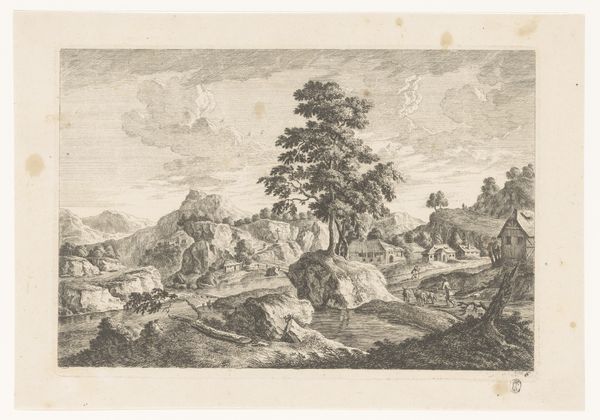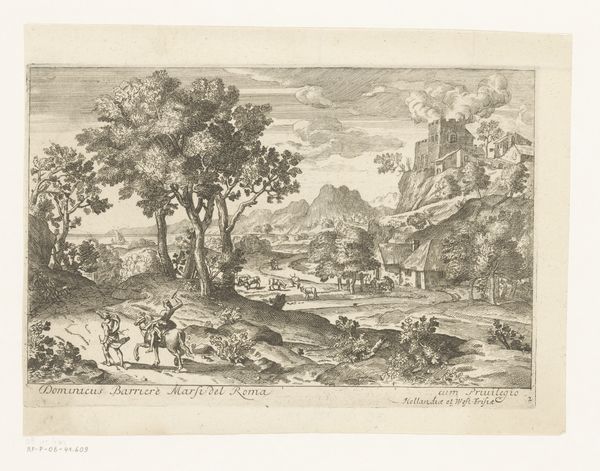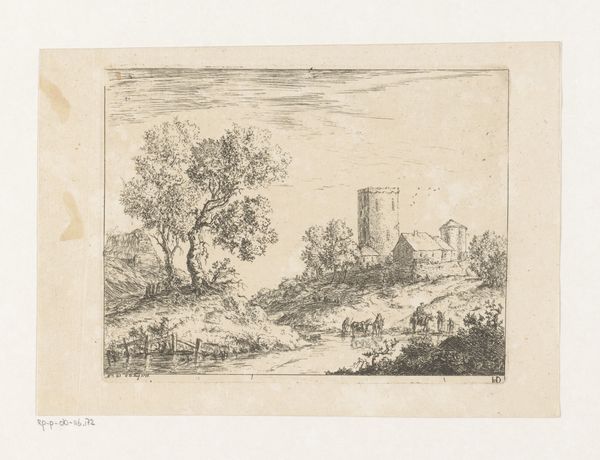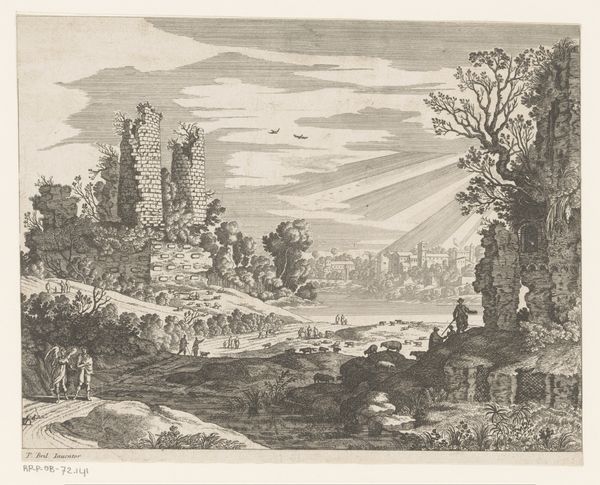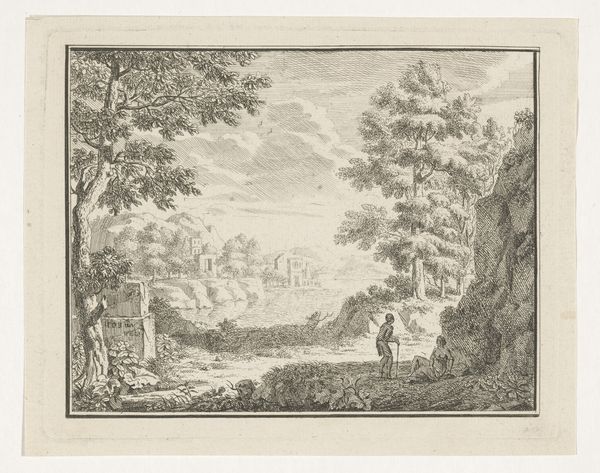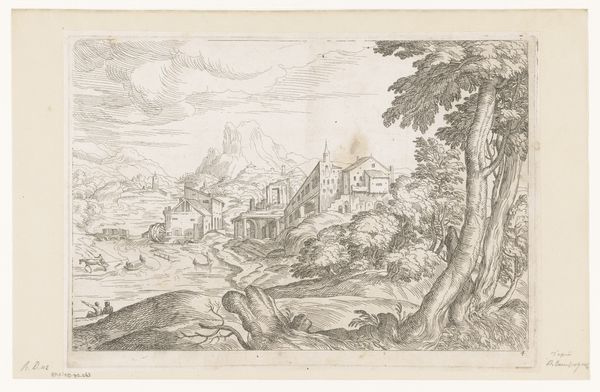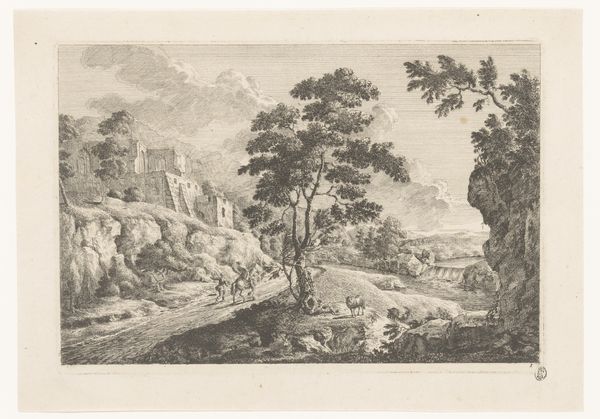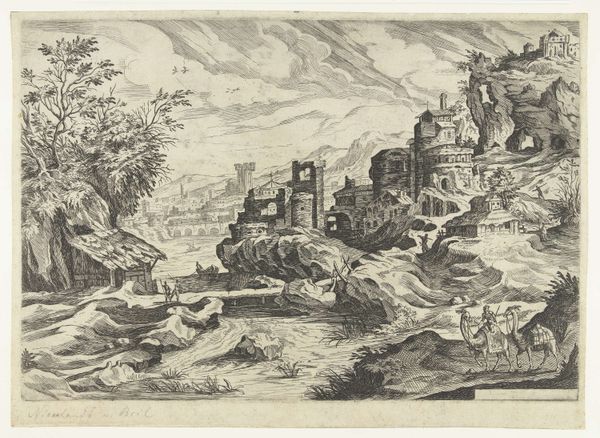
print, etching
#
baroque
# print
#
etching
#
landscape
#
etching
#
history-painting
Dimensions: height 167 mm, width 245 mm
Copyright: Rijks Museum: Open Domain
Moise Jean Baptiste Fouard created this landscape with ruins and deer using etching, a printmaking technique. The process involves coating a metal plate with a waxy, acid-resistant substance, then scratching an image into the wax. When the plate is dipped in acid, the exposed metal is eaten away, creating incised lines. These lines hold ink, which is then transferred to paper under pressure. Here, the etcher's hand meticulously crafts the image, translating the landscape into a language of line and tone. The varying depths and densities of the etched lines create a sense of depth and atmosphere. The image has a softness because of the handmade nature of the etching process, far from the world of mass production. Fouard engages with skilled traditions of draftsmanship and printmaking, while the picturesque scene evokes the aesthetic sensibilities of the time. By emphasizing materials, making, and context, we gain a richer appreciation for the cultural significance embedded within this landscape, and the labor involved in its making.
Comments
No comments
Be the first to comment and join the conversation on the ultimate creative platform.
